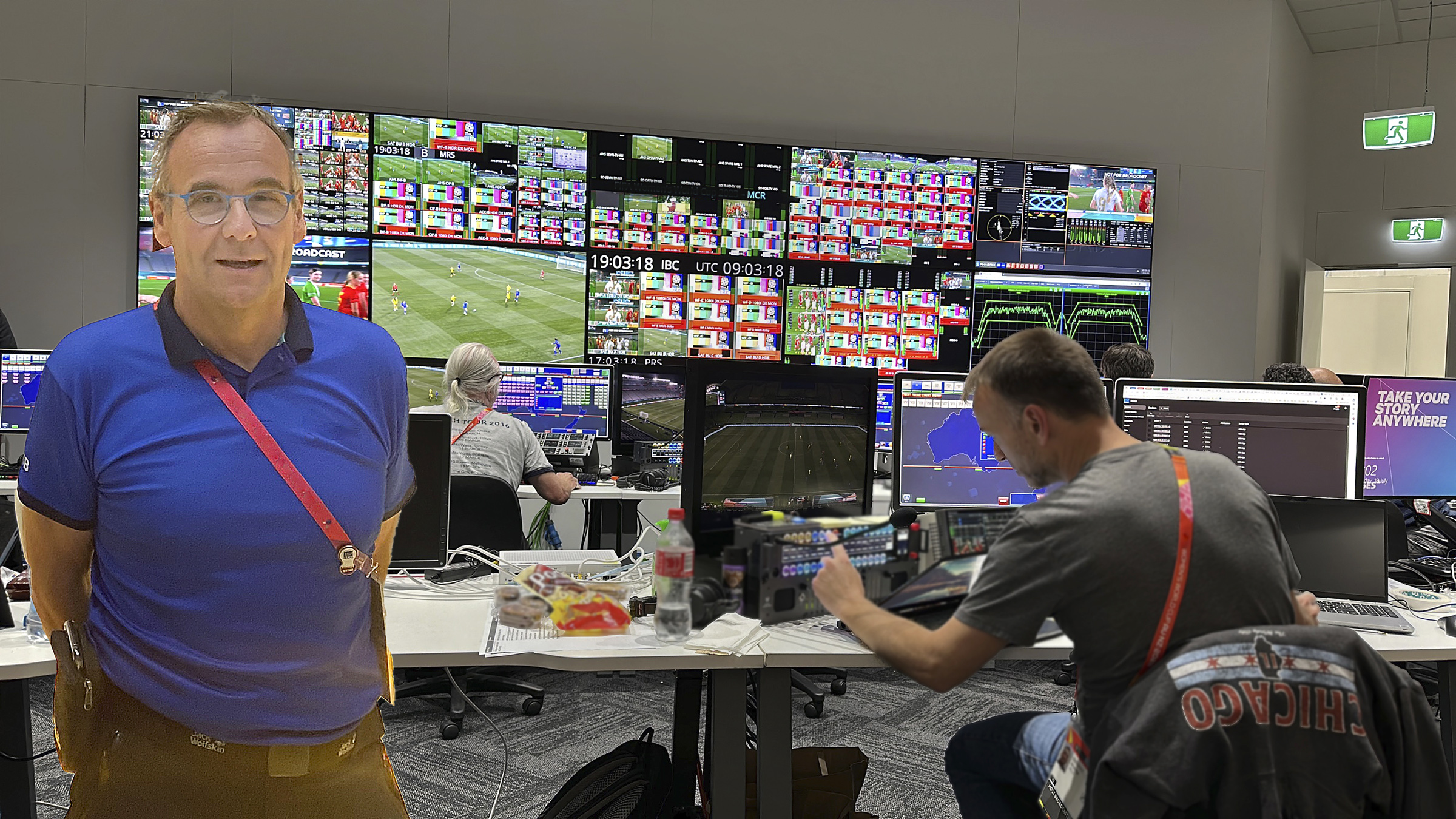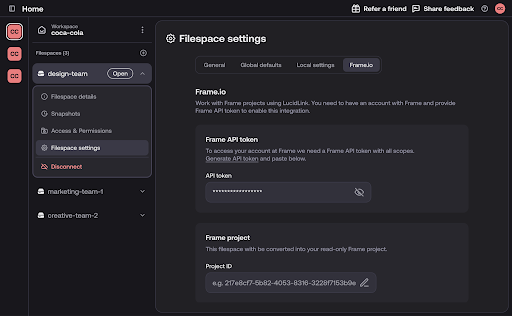IP Media Production Systems Harness Flexibility
When speed to air is critical, IP gets it done

The term “live production over IP” covers a lot of territory, but the basic idea is that IP circuits are used for at least some of the signals in the production. In some studios that are built for IP production from the ground up, IP circuits are the primary pathways, and the gear directly connects to these IP circuits.
Just about any type of production can work with IP technologies. Examples of productions that use IP techniques range from the highest-level sports and events, down to local news and talk shows. Although more traditional SDI systems are still practical and in wide use, IP-based systems are here to stay.
One huge benefit from IP techniques is the ability to get remote feeds very quickly and at low cost. What used to take an expensive satellite feed can now be set up in seconds inexpensively from anywhere in the world using an IP feed.
“On my way home from [a major sporting event in] Australia, I could not help marveling at how much has changed over the last decade,” said Karlheinz Amberg, director of global events for Lawo. “Each event has become a milestone, as cutting-edge technology is deployed at the request of host broadcasters. ST2110 IP and remote production have become the de-facto standards for today’s international broadcast centers.”
Smaller Footprint
One of the benefits of increased use of IP technology for large-scale broadcasts is that the gear has a smaller footprint.
“One might argue that thorough planning allows operators to prepare enough hardware for global events, yet last-minute requests and changes of plans are difficult to address in this way,” Amberg said. “Besides, who wants to justify the carbon footprint of shipping additional devices to where they are needed in a matter of hours?
At this year’s global events, Lawo’s HOME Apps took center stage, according to Amberg.
The professional video industry's #1 source for news, trends and product and tech information. Sign up below.
“For one recent event, it was decided to run them on 10 Dell servers (10U in total),” he said. “We used them for 60x HOME UDX apps to downconvert 3G ST2110, 1080p HDR streams to 3G ST2110, 1080p SDR, 1080i SDR and other flavors of broadcast video.”
Amberg said that when the entire planet is watching, the slightest glitch may trigger tirades of irate remarks by the director, the CTO, the organizing committee, and the sponsors who pay substantial amounts to be associated with a flawless experience.
“I think it’s fair to say that any match, race, hockey tournament, motorcycle event, etc., of global interest you have watched over the last 20 years has involved a considerable amount of Lawo gear,” Amberg said.
Stepping in When Satellite Can't
BBC Studios, the commercial arm of the BBC, used Matrox Video’s Monarch EDGE encoder technology, coupled with GlobalM’s SRT (Secure Reliable Transport) distribution platform, to televise the state funeral of Britain’s Queen Elizabeth II across the U.K. a year ago.

The workflow began with Monarch EDGE multichannel encoders. Most live content ready for distribution entered master control as SDI feeds, and an EDGE E4 quad-channel, 4:2:2 10-bit encoder captured and contributed four high-quality, low-latency streams—main and reserve domestic feeds, and main and reserve international feeds—to the GlobalM streaming platform.
The GlobalM orchestration network then distributed and transmitted the SRT-enabled feeds, including backup and redundant paths, to international rights-holders across the globe, while the master control monitored all streams in real time with the GlobalM web dashboard. During the 12-hour broadcast, GlobalM did not drop a single packet, providing worldwide BBC audiences access to 12 hours of high-quality, uninterrupted event coverage.
Spending associated with satellite contribution and distribution has historically been restricted to events that warrant its expense and complexity, and fewer and fewer broadcasters are equipped with the necessary satellite-receiving equipment. In the case of the queen’s funeral, rights-holders with no satellite capability still needed to access the signal in the same quality as satellite would provide.
“The BBC would not have been able to meet the demand for the content without the EDGE/GlobalM combination,” said Paul Calleja, chief technology officer and co-founder of GlobalM. “Matrox Monarch EDGE’s high-quality and low-latency encoding support on the GlobalM private IP backbone gave BBC Studios complete stability and quality for each stream, ensuring international rights holders near and far got exceptional event coverage.”
In this case, GlobalM chose SRT, and Monarch EDGE performed flawlessly with this transport mechanism, according to Calleja. In rapid response setups like the queen’s funeral, commissioning is key. Monarch EDGE proved easy to set up and deploy, so that the broadcaster could focus on capturing the event, and not struggle with network configuration.
The highly competent broadcast staff that operates at the highest levels needs to get experience and training in a challenging learning environment. One such program in the United States is at Fort Hays State University in Hays, Kan.
At FHSU, a faculty-led student crew is tasked with the official television production of all the school’s NCAA Division II sports, which go to paying customers. Therefore, there is no room for error or equipment failure.
FHSU broadcasts everything from football to volleyball, men’s and women’s soccer, and men’s and women’s basketball. The college also has a partnership with a local high school, where the high school pays FHSU to livestream scholastic athletic events that include football, volleyball, boys’ and girls’ basketball, and track.

“To capture all this sports content across the schools, we use about 10 cameras routed into a NewTek TriCaster TC1,” said Nick Schwien, director of Tiger Media Network at Fort Hays State University. “We use Vizrt/NewTek equipment for all our live productions in-house and off campus, including a TriCaster 2 Elite, a TriCaster TC1, a TriCaster Mini 4K, Viz Engine, 3Play 3P2 and 3Play 3P1, and other components by Vizrt.”
For cameras, FHSU uses a mix of Panasonic, Blackmagic Design, NewTek PTZ and JVC equipment. Much of the gear is mounted in a custom-made Bigfoot cart.
“Our TriCasters handle anything we can throw at them, and they are a great way for college students to learn about productions,” Schwien said. “We are even currently in the process of developing a sports production emphasis at FHSU, which works out well since the gear has been so easy for the students to learn.”
Ease of use and reliability are critical in a learning environment, and Schwien said that the TriCasters and associated gear have really worked out well in that regard.
“The TriCasters also help us stream to many different platforms using an easy setup process that expands our opportunity to reach audiences,” he said. “It helps us engage our loyal audiences and fan bases as well.”
Adapts Better to Last Minute Changes
JAB Holding is a behind-the-scenes corporation that invests in many well-known name brands, such as Panera Bread, Tiffany, Lacoste, Cover Girl and Burberry. With offices spread across the globe, it is time-consuming and expensive to have company-wide face-to-face meetings. For its annual gathering this year, JAB hired Gradient Experience to produce a two-day conference on video using high-quality IP links that featured LiveU encoders and decoders.
“The use of LiveU allowed our team to adapt to last-minute changes in scheduling,” said Corey Protin, head of livestream & studios for Gradient Experience. “When a guest could no longer fly to our London green-screen facility, we simply used a LiveU encoder alongside the LiveU LU4000 4K/quad HD rackmount receiver to bring him/her into the production. We were able to meet the presenters’ needs, without sacrificing our production quality.”
Products for live IP production are among the fastest growing categories in the video industry. Although broadcasters have been able for decades to do remote broadcasts via microwave, IP remote devices give users far more mobility and flexibility.

An example is the TVU One from TVU Networks, which just debuted at IBC 2023. The TVU One is a portable 5G cellular modem that can work at resolutions up to 4K/60 fps in HDR quality. In addition to supporting 5G cellular modems, the One can also be fitted up to work with Starlink, Wi-Fi, Ethernet and satellite.
The Power of 2110
A major network-owned station on the East Coast recently upgraded its news production to a Ross Video Hyperconverged solution. This included two Ultrix-FR5 platforms featuring integrated Ultrix Acuity production switchers, connected to the station’s existing ST 2110 production network. The Ross gear has been deployed as the heart of two live production studios, which also use the company’s routing systems and multiviewers.
“As rack space was limited, Ultrix delivered a full production solution for two studios in a compact 10RU, connecting easily into the existing ST 2110 network,” said Alun Fryer, technical marketing lead for Hyperconverged Solutions at Ross Video. “The system integrated a full-size Ultrix Acuity production switcher for each studio with the flexibility to repurpose the hardware to multiple smaller Ultrix Carbonite switchers on demand for smaller production jobs.”
Fryer explained why the Ross Ultrix solution was the right for this large broadcaster.
“[Ultrix] integrates video and audio production, signal processing and routing into a compact, adaptable platform,” he said. “The software-defined features allow the customer to adapt the capabilities of the platform to the needs of the facility dynamically, giving them the production flexibility they needed.”
The tools for live IP production cover a lot of turf in the television industry, incorporating everything from familiar-looking devices like production switchers to cloud-based services that were just thought of a few years ago. The competitiveness of the live broadcast business—especially news—means that broadcasters are always going for the gear that will get them on air with news in the fastest, most flexible way possible.
This in turn spurs manufacturers to develop products and systems that give broadcasters that “faster-than-now” capability. IP systems, with their easy integration of wireless and wired devices, is the platform on which faster-than-now is built.

Want to learn more? Attend TV Tech's free October TV Tech Talk: Advances in Live IP Production, Oct. 19. Register here.
Bob Kovacs is the former Technology Editor for TV Tech and editor of Government Video. He is a long-time video engineer and writer, who now works as a video producer for a government agency. In 2020, Kovacs won several awards as the editor and co-producer of the short film "Rendezvous."

